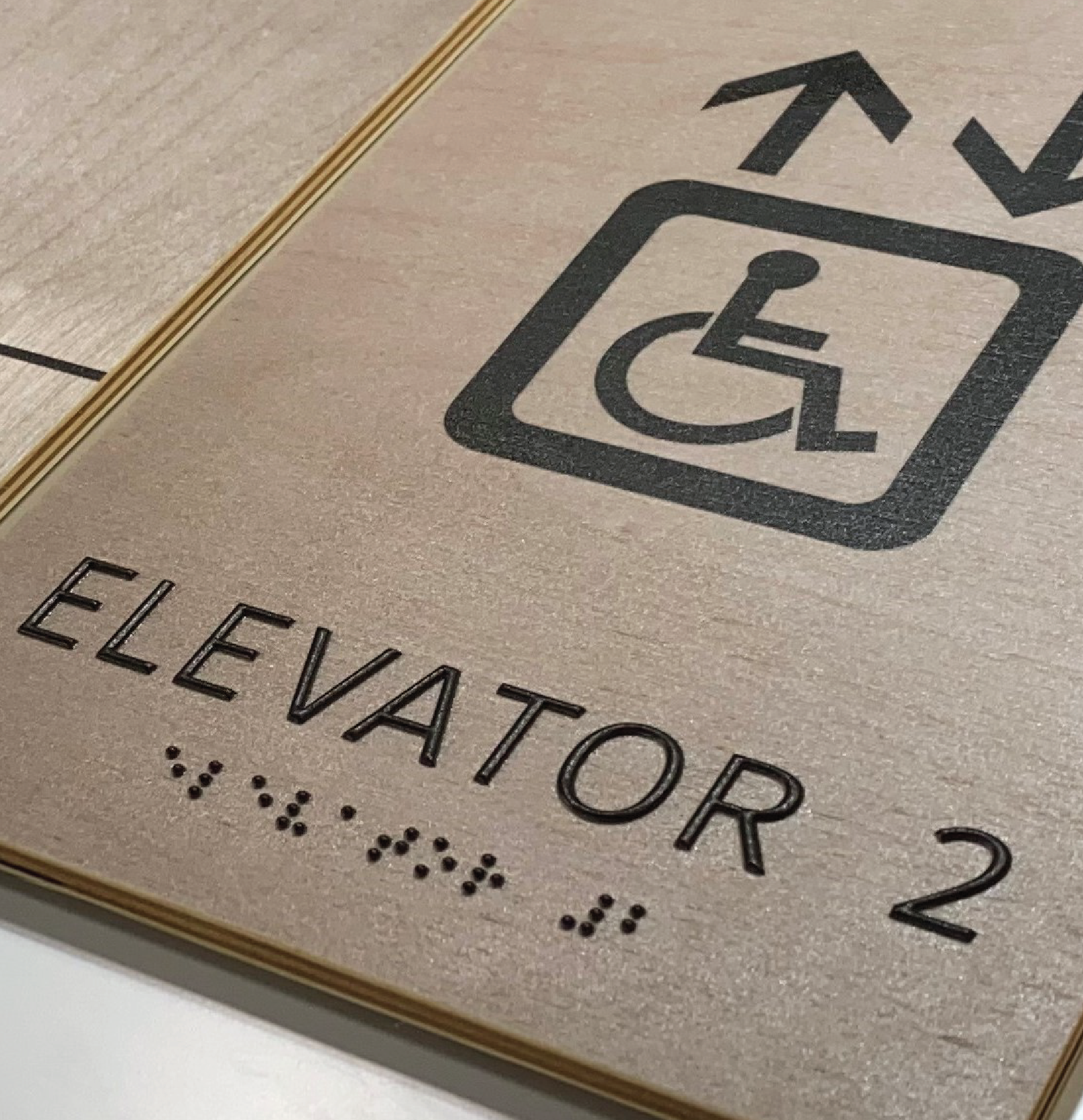Exploring the Trick Features of ADA Signs for Enhanced Ease Of Access
In the realm of availability, ADA indicators act as quiet yet powerful allies, ensuring that spaces are accessible and comprehensive for people with specials needs. By integrating Braille and responsive components, these indicators break barriers for the visually impaired, while high-contrast color schemes and legible typefaces provide to diverse visual demands. Their critical positioning is not arbitrary yet rather a calculated effort to help with smooth navigation. Yet, beyond these attributes lies a deeper narrative concerning the advancement of inclusivity and the continuous commitment to producing equitable areas. What much more could these signs symbolize in our search of universal accessibility?
Importance of ADA Conformity
Making certain conformity with the Americans with Disabilities Act (ADA) is vital for promoting inclusivity and equal gain access to in public rooms and workplaces. The ADA, enacted in 1990, mandates that all public centers, employers, and transportation solutions suit people with handicaps, guaranteeing they enjoy the exact same legal rights and opportunities as others. Compliance with ADA requirements not just meets lawful obligations yet also enhances an organization's track record by showing its commitment to variety and inclusivity.
One of the vital aspects of ADA conformity is the application of easily accessible signage. ADA indications are designed to ensure that individuals with disabilities can conveniently navigate through areas and structures.
In addition, sticking to ADA guidelines can reduce the risk of prospective penalties and lawful consequences. Organizations that stop working to abide by ADA guidelines might encounter claims or penalties, which can be both economically troublesome and destructive to their public image. Thus, ADA conformity is essential to cultivating an equitable environment for every person.
Braille and Tactile Elements
The unification of Braille and tactile elements into ADA signs symbolizes the concepts of access and inclusivity. These attributes are critical for individuals who are aesthetically impaired or blind, enabling them to browse public spaces with higher freedom and self-confidence. Braille, a responsive writing system, is vital in giving written details in a style that can be conveniently perceived through touch. It is normally positioned beneath the matching text on signage to guarantee that individuals can access the details without visual support.
Tactile elements extend beyond Braille and include increased symbols and characters. These elements are made to be discernible by touch, enabling individuals to recognize space numbers, bathrooms, exits, and other critical locations. The ADA sets certain guidelines concerning the size, spacing, and positioning of these responsive elements to optimize readability and make certain uniformity across different environments.

High-Contrast Color Schemes
High-contrast color pattern play a pivotal duty in improving the visibility and readability of ADA signs for individuals with visual disabilities. These schemes are crucial as they maximize the distinction in light reflectance between text and background, ensuring that indications are quickly noticeable, even from a range. The Americans with Disabilities Act (ADA) mandates using specific color contrasts to accommodate those with minimal vision, making it a vital facet of conformity.
The effectiveness of high-contrast shades hinges on their capacity to stand apart in different lighting problems, consisting of dimly lit settings and areas page with glare. Generally, dark message on a light history or light message on a dark background is used to accomplish optimum contrast. Black text on a white or yellow background supplies a raw aesthetic distinction that assists in quick recognition and understanding.

Legible Fonts and Text Dimension
When considering the design of ADA signage, the selection of legible fonts and suitable text size can not be overemphasized. These components are crucial for ensuring that signs are available to individuals with aesthetic problems. The Americans with Disabilities Act (ADA) mandates that fonts must be sans-serif and not italic, oblique, script, highly ornamental, or of uncommon type. These demands assist make sure that the text is quickly legible from a range which the characters are appreciable to diverse audiences.
According to ADA guidelines, the minimum text height should be 5/8 inch, and it must enhance proportionally with viewing distance. Consistency in message size adds to a cohesive aesthetic experience, aiding people in browsing environments effectively.
Furthermore, spacing in between letters and lines is indispensable to legibility. Ample spacing avoids personalities from appearing crowded, boosting readability. By adhering to these criteria, designers can considerably enhance accessibility, guaranteeing that signs offers its intended function for all people, no matter their visual capabilities.
Efficient Positioning Strategies
Strategic placement of ADA signs is crucial for taking full advantage of availability and making certain conformity with legal standards. ADA guidelines stipulate that signs should be placed at an elevation between 48 to 60 inches from the ground to ensure they are within the line of sight for both standing and seated individuals.
Furthermore, indicators must be positioned adjacent to the latch side of doors to allow very easy recognition prior to entry. Uniformity in indication positioning throughout a facility enhances predictability, decreasing complication and improving total individual experience.

Conclusion
ADA indications play an important duty in promoting availability by integrating attributes that address the needs of people with specials needs. Integrating Braille and responsive components ensures important information is easily accessible to the aesthetically impaired, while high-contrast color design and understandable sans-serif typefaces enhance visibility across different lights problems. Reliable positioning approaches, such as appropriate mounting heights and tactical places, even more promote navigating. These components jointly cultivate an inclusive environment, highlighting the relevance of ADA conformity in ensuring equal access for all.
In the realm of availability, ADA indications serve as silent yet effective allies, making sure that areas are comprehensive and accessible for individuals with disabilities. The ADA, enacted in 1990, mandates that all public facilities, employers, and transportation solutions fit individuals with disabilities, guaranteeing they appreciate the very same legal rights and opportunities as others. ADA Signs. ADA signs are made to make sure that individuals with handicaps can conveniently navigate via spaces and buildings. ADA standards state that signs must be mounted at an elevation between 48 to 60 inches from the ground to ensure they are within the line of view for both standing and seated individuals.ADA indicators play a vital role in advertising access by integrating functions that attend to the needs of people with impairments
 Michael Jordan Then & Now!
Michael Jordan Then & Now! Burke Ramsey Then & Now!
Burke Ramsey Then & Now! Earvin Johnson III Then & Now!
Earvin Johnson III Then & Now! Tina Louise Then & Now!
Tina Louise Then & Now! Richard Dean Anderson Then & Now!
Richard Dean Anderson Then & Now!